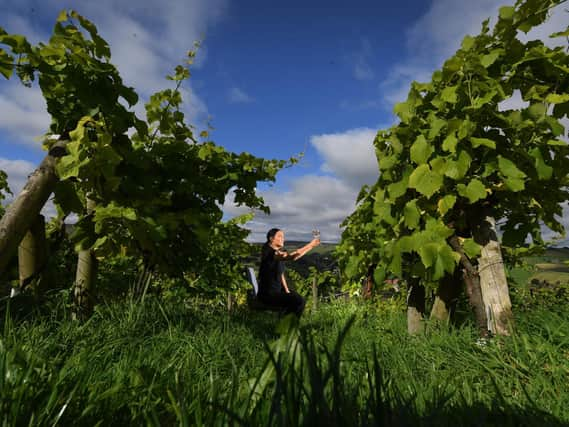Yorkshire wine growers at England's highest vineyard prepare for harvest


And as grape growers here prepare for the upcoming harvest, there are hopes for a good year for their wine, despite late frosts and a wet spring.
The Holmfirth Vineyard is England’s highest, at some 800ft above sea level. The result, said guide Dean Conway, can be subtler tastes from grapes that see less sun.
Advertisement
Hide AdAdvertisement
Hide Ad“Northern English weather isn’t known for growing wine,” he said. “We have picked vines which are bred to thrive in cooler climates, with dry and subtle light wines. A late frost is always bad, as it makes the vines spring later.
“That is what’s happened this year. The vines are about two weeks late and we will look to pick the grapes at the tail end of next week or maybe the week after. We tested the sugars last week and hopefully with a little bit of sunshine they will be ready.”
There are few vineyards this far north in England, though one in Scotland has proved remarkably successful.
Traditionally, vineyards are found in areas with plenty of sunshine, few frosts and a more temperate climate.
Advertisement
Hide AdAdvertisement
Hide AdThe family estate here was set up by Ian and Becky Sheveling and now draws thousands of visitors every year, with wine-tasting tours, a restaurant and accommodation.
But this year had particularly late frosts, with a cooler start to the growing season and a wetter spring.
The Sheveling estate, set across seven acres in the heart of the Holme Valley, produces very traditional flavours of wine, said Mr Conway, with three varieties of red, white and rose.
They most often have a very English taste, resembling apples and pears, raspberries or gooseberries.
Advertisement
Hide AdAdvertisement
Hide AdWhile the shortage of sun at the start of this year’s growing season will not have an impact on the taste of the wine, he said, it may result in a subtler tone.
“It won’t change the flavour, perhaps just the intensity of flavour,” said Mr Conway. "If a wine tastes like apples and pears, it will still taste of apples and pears.
“With more sunshine, those flavours intensify. This year’s wines may be a little bit more subtle.”